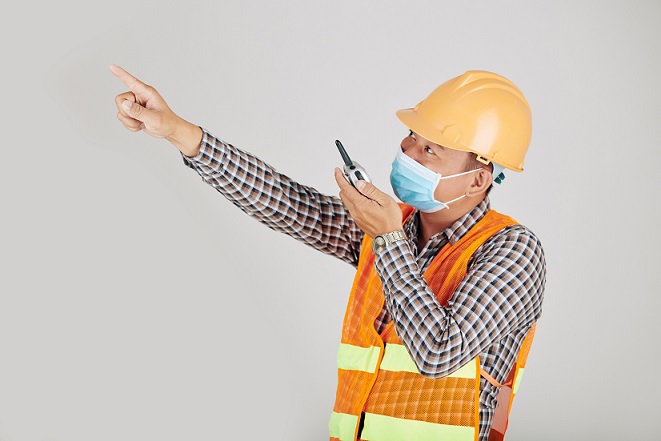Originally posted on: https://www.bestmarketingwebsitesforcontractors.com/osha-standard-what-is-it-how-does-it-affect-contractors-and-how-did-covid-19-affect-it/
While at work, the majority of people want to know that they’re safe. In order to ensure workplace safety, the Occupational Safety and Health Administration (OSHA) has outlined standards that employers must adhere to when it comes to protecting their employees from hazards. Many industries face OSHA standards, including construction work, maritime operations, and more. A person with an OSHA certified is authorized to work towards a safer and healthier workplace. An OSHA certified individual is able to oversee and report on workplace safety and ensure legislative compliance in the industry in which he or she works. For industries deemed dangerous, following OSHA standards and being OSHA certified is mandated by law. In addition, the certificate holder has to attend extra training up to twice annually in order to keep their certification in good standing.
What is OSHA and the OSH Act?
The OSH Act, which stands for the Occupational Safety and Health Act of 1970, was passed to prevent employees from being harmed or injured while at work. Under this law, employers are required to provide employees with safe working conditions free of known hazards. The OSH Act was created by the Occupational Safety and Health Administration as a way to enforce protective workplace safety and health standards. OSHA as an organization also provides information and training to both employees and workers regarding the OSH Act.
Under the OSH Act, workers have the right to safe and healthful working conditions. Employers are lawfully required to provide safe workspaces for their employees. The OSH Act gives employees the right to file confidential complaints with OSHA to have their work environment inspected, and receive training and information about hazards, ways to prevent injuries, and OSHA standards that apply to their specific workplace. Employees also are allowed to review records detailing work-related injuries and illnesses that have occurred in their place of work, get copies of workplace medical records, and file complaints with OSHA in the case of employer retaliation due to requesting an inspection or exercising any of their other rights that exist under the OSH Act.
The OSH Act also outlines the rules employers must follow. Under the OSH Act, employers are required to provide their employees with a safe work environment by finding and correcting safety issues. OSHA requires that employers eliminate potential hazards by implementing feasible changes in the current working conditions. This can be done by doing things like switching to safer chemicals, using enclosing processes to trap harmful fumes, or using ventilation systems to ensure clean air. Simply providing personal protective equipment is not enough to ensure a safe workplace.
How does OSHA impact general contractors?
For many decades both government and industry authorities have agreed that general contractors need to ensure that the work performed on their behalf is done in a safe manner that is also compliant with the Occupational Safety and Health Administration (OSHA). Under the OSHA Act, all employers, general contractors, contractors, and subcontractors have to ensure that their work is performed safely and that they employ OSHA certified personnel to conduct regular safety inspections.
OSHA believes that the general contractor is responsible for making sure other contractors and subcontractors working on their behalf fulfil their safety obligations in regards to employee safety. Given their credentials and supervisory role, a general contractor should have to necessary resources to assess the safety of the workplace and to identify any dangers. OSHA believes that it is reasonable to expect general contractors to ensure that their worksite is OSHA-compliant and that all of their employees are safe. While OSHA believes the general contractor is responsible, they also believe that general contractors should not be held legally responsible for health and safety violations that could not be reasonably detected or prevented. While this may be true, general contractors are still responsible for violations by its subcontractors that could have been easily detected and corrected. OSHA wants the general contractor to take full responsibility for the mistakes of its subcontractors, as the federal safety and health laws place primary responsibility for environmental safety for all employees on the primary employer (aka the general contractor).
How has COVID-19 impacted OSHA standards?
Due to COVID-19, OSHA has had to amend its rules and regulations in order to include safety methods to protect against the quickly spreading and potentially fatal virus. OSHA’s goal is to both control and prevent the spread of COVID-19 as much as possible, which is why they had to release new guidelines specifying how to do so. The risk incurred is based on the type of work being performed, necessary interactions with other people, and if the workplace is contaminated or not. Employers should all remain informed about outbreak conditions and implement infection control and prevention methods accordingly.
On OSHA’s website, one can find all of the information they need on the COVID-19 emergency temporary standard for healthcare. Their website covers everything from cleaning and disinfecting all the way to coronavirus-related retaliation. While OSHA believes that the best method for preventing the spread of COVID-19 is vaccination, there are still practices that can be implemented to stop the spread regardless of vaccination status. Some of the best prevention practices include workplace risk assessment for potential coronavirus exposure and taking steps to improve the workplace’s ventilation. In areas with high transmission rates, employers must provide face covering for all workers no matter what their vaccination status is.
There are many OSHA standards that apply to employer protection of its workers during the COVID-19 pandemic. For example, OSHA’s Personal Protective Equipment (PPE) standards both in the general industry and in construction, which requires that a PPE hazard assessment is conducted to assess potential hazards and that PPE should be used when necessary, still apply. OSHA also has a General Duty Clause of the OSH Act that requires employers to provide employees a work environment free from recognized hazards that can and will cause death or physical harm. The General Duty Clause is clearly applicable to the COVID-19 pandemic, as it has been proven to be quite deadly.





